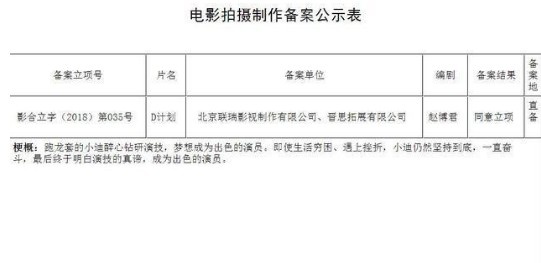Release time: April 2, 2021 Release location: Press Release Hall of Radio and Television Building Release unit: Highway Management Service Center of Wuhu Transportation Bureau
Host: Zhang Shengjie, Wuhu Highway Management Service Center, Publisher: Cheng Yi, Deputy Director of Wuhu Highway Management Service Center

Distinguished guests and friends from the news media,
Good morning everyone!
Today, I invite you to participate in the press conference of Wuhu’s transportation system "Highway Construction Project Situation in the First Year of the ’14th Five-Year Plan ‘", mainly to inform the Municipal Highway Management Service Center of the construction of key highway projects in 2020 and the next key tasks. Here, on behalf of the Municipal Highway Management Service Center, I would like to express my heartfelt thanks to all the media friends for taking the time out of their busy schedules to participate in the event. Below, according to the arrangement, I will introduce the relevant situation of key project construction to you.
In order to overcome the impact of the epidemic and resume the construction and production of key highways as soon as possible, according to the work deployment of the Municipal Party Committee, the Municipal Government and the Municipal Transportation Bureau, and guided by the red party building leading green transportation, the Municipal Highway Management Service Center resolutely implements the overall idea and requirements of "one-to-two-to-five improvement", mobilizes the strength of the whole system, and achieves epidemic prevention and control and project resumption.
I. Brief description of the development during the "13th Five-Year Plan" period
The past five years have been a period of major highway construction
Key projects were solidly advanced, and national and provincial arterial roads were crisscrossed and connected into a network.
Our center has implemented a total of 12 new reconstruction projects of key projects, with a total investment of about 2.85 billion yuan and a mileage of about 40.1 kilometers.
Promote the development of "rural roads + integration", improve the comprehensive service level of rural transportation, and help rural revitalization. The investment of rural roads is 2.46 billion yuan. The implementation of the rural road smooth project is 2071.29 kilometers, the rural road expansion and extension project is 2057.99 kilometers, the maintenance project is 981.1 kilometers, the safety and life protection project is 1235.29 kilometers of county and rural roads, 216.19 kilometers of village roads, and 6 dangerous bridge reconstruction projects.
(2) The past five years have been dedicated to road maintenance
Highway maintenance has been carried out steadily, and service capabilities have been improved. A total of about 110 million yuan has been invested in minor repairs and maintenance of national and provincial trunk roads to ensure the daily maintenance of about 800 kilometers of national and provincial trunk roads in the city.
Implemented 52 major and medium maintenance projects, with a total mileage of 516 kilometers and a total investment of 800 million yuan; implemented 382 kilometers of highway life protection projects and completed an investment of 87.70 million yuan; implemented 6 dangerous bridges and completed an investment of 39.50 million yuan.
Highway network adjustment, road network structure optimization. The highway network has been readjusted nationwide. The new mileage of national highways in our city is 6.631 kilometers, and the new mileage of provincial highways is 485.279 kilometers. At present, there are 5 national highways in our city, totaling 361.776 kilometers, and 20 provincial highways, totaling 683.495 kilometers.
(3) The past five years have been the five years in which the pioneering role has been played
Targeted poverty alleviation, focusing on building a well-off society in an all-round way. For a total of 71 poverty-stricken villages in Wuwei City and Nanling County, a total of 392.5102 million yuan was invested in the special project of transportation finance for poverty alleviation, and 2221 transportation poverty alleviation projects were implemented. Benefiting 304 administrative villages in two counties (cities), 47,140 people in 31,258 households benefited from poverty, and better promoted the completion of the targeted poverty alleviation goal.
II. Achievement of annual goals
In 2020, there are 3 key projects of the Municipal Highway Management Service Center, with a total planned investment of 1.462 billion yuan. The planned investment in 2020 is 590 million yuan, and the investment is 594.31 million yuan by the end of December, accounting for 100.73% of the planned investment in the whole year.
There are 11 major and medium repairs on trunk lines in China and the province, with a total mileage of 64.574 kilometers. The investment is 102.42 million yuan, the investment in bridge repair and maintenance is 11 million yuan, and the investment in special project maintenance is 5.70 million yuan.
The mileage of rural highway construction is 1264.983 kilometers, and the cumulative total investment is 764.441 million yuan, an increase of 66.25% year-on-year, accounting for 85.93% of the planned investment for the whole year. 50 large and medium repairs, the cumulative mileage is 317.182 kilometers, and the investment is 113.4481 million yuan, an increase of 17.4% year-on-year, accounting for 12.75% of the annual investment plan. The implementation of highway life protection projects is 94.008 kilometers, and the investment is 11.704 million yuan.
III. Review of the progress of the project in 2020
(1) Major projects are planned to move quickly
Grasp the early stage and promote the start of construction. The preliminary work of the two new projects is progressing steadily. They are: S334 Eshan Road East Extension (Yanjiang Expressway-Wuxuan Expressway) New Construction Project (Phase II), Tongjiang Avenue Jiangbei Avenue and Shen Section Urban Construction Project.
1. S334 Eshan Road East Extension (Yanjiang Expressway – Wuxuan Expressway) New Construction Project (Phase II). At present, the project land use committal hearing has been completed, and the Provincial Development and Reform Commission has approved the project work. The next step is to carry out special research on land approval, security evaluation, water and soil conservation, etc. At the same time, the land acquisition and demolition work will be carried out in advance with the territorial government.
2. Tongjiang Avenue Jiangbei Avenue to Heshen section of the urban construction project. At present, the Provincial Development and Reform Commission has approved the project, and has completed the preliminary design review and modification work. The next step is to complete the budget review and construction map design.
Focusing on construction and stabilizing investment, the investment plan for three key projects under construction was successfully completed.
1. G205 Jiuhua South Road Fast-moving Baliwan Cross-Wuwu Copper Railway Bridge Reconstruction Project.
The project line is 1.47 kilometers, the design speed is 80 kilometers/hour, and the planned total investment is 325 million yuan (the contract price is 237 million yuan). The construction will start on July 17, 2019. The planned investment in 2020 is 110 million yuan, and the investment will be 111.23 million yuan by the end of December, accounting for 101.12% of the planned investment for the whole year.
2. S334 Eshan Road East Extension (Yanjiang Expressway – Wuxuan Expressway) New Construction Phase 1.
The project line is 4.2 kilometers, the design speed is 80 kilometers/hour, and the planned total investment is 826 million yuan (the construction contract price is 532 million yuan). The project officially started on November 15, 2019. The planned investment in 2020 is 300 million yuan, and the investment is 302.98 million yuan by the end of December, accounting for 100.99% of the planned investment for the whole year.
3. G205 Jiuhua South Road Rapid Damao Interchange Project.
The project line is 1.29 kilometers, the design speed is 80 kilometers/hour, and the planned total investment is 311 million yuan (the construction contract price is 198 million yuan). It will start construction on December 25, 2019. The planned investment in 2020 is 180 million yuan, and the investment will be 180.10 million yuan by the end of December, accounting for 100% of the planned investment for the whole year.
(2) Fine maintenance to create a new image of "smooth and comfortable" highways
Repair asphalt concrete treatment of road disease 11041.02 square meters (excluding road emergency maintenance construction), repair bridge expansion joint 20.36m, at the same time carried out the road tree pruning, crossing mark column planting, blocking sign cleaning, new marking, etc., the annual cumulative investment in minor repair cost maintenance 24.50 million yuan, effectively ensure the safety and smoothness of the road.
(3) "Four Good Rural Roads" were advanced with high quality and poverty reduction was successfully completed
The rural road expansion and extension project is 1265 kilometers, including 620 kilometers of poverty alleviation projects, and 317 kilometers of rural road maintenance projects have been completed. The rural road safety and life protection project has been completed. The county road security is 7.7 kilometers, and the village road security is 86.3 kilometers. The successful completion of the task helps the poverty reduction victory.
III. Main goals and construction tasks of the "14th Five-Year Plan"
The 19th National Congress of the Communist Party of China has made major strategic plans such as building a transportation powerhouse and promoting the integration of the Yangtze River Delta. The national level has successively issued the "Outline of the Development Plan of the Yangtze River Economic Belt", "Higher Quality Integrated Development Plan of Transportation in the Yangtze River Delta", "Outline of Construction of a Transportation Powerhouse" and other relevant planning and guiding opinions. Anhui Province has issued relevant implementation opinions, which have drawn a blueprint and pointed out the direction for the development of highway transportation in Wuhu in the future. In order to do a good job of high-level integration with the table, it will be a "bridgehead" for Anhui to integrate into the high-quality development of the Yangtze River Delta. The general idea of our center’s "14th Five-Year Plan" is: "Network, expand capacity, and optimize structure", insist on looking east and comparing to the east, plan and reserve a number of key projects with high standards, increase infrastructure building efforts, and comprehensively improve road network structure and highway grade. Stimulate reform momentum, promote the transformation of development mode, accelerate the construction of highway informatization, build intelligent transportation, efficient transportation, and improve comprehensive service capabilities.
(1) Perfect the layout and build a three-dimensional interconnected highway network of national and provincial trunk lines
In accordance with the development requirements of "building a large corridor, building a large hub, and developing a large transportation", we will strengthen infrastructure planning and construction, improve the layout of the highway network, optimize the highway structure, and be an important link for the mutual promotion of internal and external economic cycles. Our center plans to start 9 projects, with an estimated total investment of 6.957 billion yuan.
1. G205 Jiuhua South Road passes through Ning’an Intercity Interchange. Estimated total investment 64 million yuan.
2. G205 Jiuhua South Road Rapid Reconstruction Project (Phase II). The estimated total investment is 1.50 billion yuan, with a total length of 10 kilometers.
3. G205 Jiuhua South Road Rapid Reconstruction Project Archway Interchange. Estimated total investment 43 million yuan.
4. Tongjiang Avenue and Shen Road to Wuwei section of the urban construction project. Estimated total investment of 510 million yuan, a total of 4.725 kilometers.
5. G329 Jiangbei Section of the first-class highway reconstruction project. Estimated total investment of 1.30 billion yuan, the total mileage of 13 kilometers.
6. S335 Bay Di Road Stone Road to Xinhuai section of the new project, the estimated total investment of 768 million yuan, a total length of 6.4 kilometers.
7. S335 Bay Di Road Yangjiadu Bridge to Wunan Road Reconstruction Project. The estimated total investment is 759 million yuan, a total of 6.9 kilometers.
8. S335 Wan Di Road Eqiao to Fanchang Section Road Reconstruction Project. Estimated total investment of 813 million yuan, a total length of 7.39 kilometers.
9. S334 Eshan Road East Extension Construction Project (Phase III). The estimated total investment is 1.20 billion yuan, with a total length of 10 kilometers.
(2) Improving highway functions and enhancing road maintenance services
1. Improve the refinement and standardization of maintenance work, and increase the use and promotion of "new technologies, new processes, new materials, and new equipment" in maintenance work.
2. Promote the construction of large and medium maintenance projects: From 2021 to 2023, it is planned to carry out large and medium maintenance projects on trunk roads in 69 countries and provinces, and plans to invest 1.76 billion yuan. Provide a safe and smooth transportation condition for the masses.
3. Speed up the intelligent construction of highway transportation: The construction content of smart highways mainly includes smart facilities, smart decision-making, smart management and control, and smart services. Our center is compiling the "Technical Guide for the Construction of Smart Highways on Ordinary Trunk Lines" Wuhu City Local Standard, which is expected to be officially published in June 2021. It is planned to build 1 to 2 smart highway demonstration sections during the "14th Five-Year Plan" period according to this standard.
(3) Keep up with the pace of the times and open up a new situation in rural highway construction.
1. Upgrade the grade of rural roads to help rural revitalization and agricultural and rural modernization. Through the implementation of the "five major projects", efforts will be made to deepen the reform of the management and maintenance system of rural roads, effectively solve the shortcoming problems of good management and protection in the work of "four good rural roads", and promote the high-quality development of "four good rural roads". Combine rural roads with industrial development and tourism development to build a number of industrial roads and tourist roads. For the latest planned county and rural road network, in accordance with the requirements of the provincial government "one standard is met and one warehousing", the transformation of county and rural roads to meet standards will be arranged in a gradual and orderly manner, improve the road condition level of the road network, help rural revitalization, and consolidate the achievements of poverty reduction.
2. Strengthen the daily maintenance and management of rural highways and build beautiful rural roads. Gradually carry out the evaluation of the technical status of rural highway maintenance, and scientifically arrange large and medium-sized maintenance projects according to the evaluation results. Increase investment in rural highway maintenance, ensure the implementation of daily maintenance funds for county-level rural highways, and gradually realize the normalization of daily maintenance of all county, township and village roads on the existing basis. The city’s rural highway stocking rate reaches 100%, the average annual maintenance project proportion is not less than 5%, and the proportion of rural highways of medium and above is not less than 85%. In principle, by 2025, the proportion of county roads and third-level roads shall not be less than 80%, and the proportion of double lanes in organized villages shall be 100%.
3. Continue to deepen the demonstration and creation of "Four Good Rural Roads", and lead the village with Lumei Village and Road. First, carry out the creation of rural highway quality demonstration roads. Adhere to the principle of "adapting to local conditions, economical application, green ecology, and innovation-driven", make full use of old road resources, and strengthen the intensive and economical use of highway maintenance resources; strengthen quality supervision, prolong the service life of highways, and reduce operation and maintenance costs; actively build a harmonious ecology along rural highways, and strengthen afforestation and greening on both sides of the highway and the protection of native vegetation. Second, carry out the creation of municipal demonstration towns for high-quality development. By 2025, it is planned to select 2 municipal demonstration towns every year.
IV. Work arrangements for 2021
According to the municipal government’s investment plan, there are 31 investment projects in 2021, of which 10 are in the early stage of the project, with a total investment of about 7.729 billion yuan; 21 projects are started, and the planned investment is 1.93272 billion yuan.
(1) Advance three continued construction projects
Except for the first phase of the new construction of the S334 Eshan Road East Extension (Yanjiang Expressway – Wuxuan Expressway), the rest are scheduled to be completed this year.
(2) Two new projects: the planned total investment of 2.488 billion yuan
1. Tongjiang Avenue Jiangbei Avenue to Heshen section of the urban construction project. Estimated total investment 668 million yuan. The project starts at the planned Jiangbei Avenue, joins the completed urban construction section, passes through Tanggou Town, and ends at the planned Heshen Road, with a mileage of 6.2 kilometers. On the basis of the original first-class road, the widened parts on both sides are 4.75 meters of separation belt + 8.0 meters of auxiliary road + 2.5 (4.0) meters of sidewalk.
2. S334 Eshan Road East Extension (Yanjiang Expressway – Wuxuan Expressway) New Construction Phase II. Estimated total investment of 1.82 billion yuan. (1) Eshan Road East Extension: About 660 meters west of the current Jingshi Road (planning Mengxi Road) to Yinkang Interchange, including the planning of Mengxi Road Crossing Bridge, crossing Qingyi River and Wutun Road Bridge, Shachen River Bridge. The total length is about 5.1 kilometers, a two-way six-lane first-class highway, and the width of the roadbed is divided into two forms: 53m and 31.5m. (2) G5011 Wuhu Yingang (Liulang) Interchange Project: Eshan Road East Extension crosses Yinkang and G50 Shanghai-Chongqing Expressway Interchange, using A-type single horn interchange, on the ramp across the expressway, set 4 in 6 out toll stations.
Strengthen highway and bridge maintenance and deeply empower the development of smart highways
There are 14 maintenance projects in 2021. Among them, 14 are newly started projects with a planned investment of 535.72 million yuan; 2 are in the early stage of the project with a planned investment of 225 million yuan. Among them:
1. Post-disaster reconstruction projects and road repair projects: Complete the construction of all 7 post-disaster reconstruction projects by July this year, and complete the 10 road repair projects included in the provincial plan for 2021 by October.
2. Dangerous bridge renovation project: We will make every effort to complete the maintenance and renovation projects of the four dangerous bridges, namely Niutun River Bridge, Yangjiadu Bridge, Chengqiao Bridge, and Qingyi River Bridge, to ensure that the project is completed before October 2021 and the normal traffic of the bridge is resumed as soon as possible.
3. Smart Highway Demonstration Road Construction: The G205 urban section will be turned into a smart highway demonstration road. At present, the project has been applied to the Municipal Development and Reform Commission for approval. It is expected that the preliminary work can be carried out by the end of January, and the construction work is planned to be completed by November 2021.
(4) Continuing to promote the effective connection between comprehensive poverty reduction and rural revitalization
In 2021, there will be 2 rural highway construction and maintenance projects, with a planned investment of 328 million yuan. Among them:
1. Implement rural highway upgrade projects and county road upgrade projects (highway width not less than 6.5m, third-class roads and above).
2. Implement a two-lane project for the establishment of villages (the width of the highway is not less than 6 meters wide).
3. Implement rural road maintenance projects. Complete 480 kilometers of rural road maintenance projects, including 120 kilometers of large and medium repairs.
4. Implement a three-year risk elimination project for rural highways. Focus on the implementation of village road security projects, and renovate the existing dangerous bridges in the statistical annual report, and include the newly added dangerous bridge projects in the warehouse into the scope of renovation. Rural highway projects with upgraded grades are implemented simultaneously according to the principle of "three simultaneous" safety facilities.
5. Implement the white-to-black project of rural highways. Upgrade the asphalt pavement of the existing cement concrete pavement with poor road conditions where conditions permit.
6. Implement rural highway high-quality development demonstration projects, such as pilot cities, demonstration cities, and industrial tourism demonstration projects, to better assist rural revitalization and development.
Anhui transportation is in a period of major strategic opportunities, we will continue to enhance the sense of progress, seize the opportunity, take advantage of the momentum, in-depth study and implementation of the spirit of the party’s 19th Central Committee of the Fifth Plenary Session and the supreme leader of the General Secretary’s inspection of Anhui important speech instructions, resolutely implement the Party Central Committee to promote epidemic normalization prevention and control and economic and social development work decision-making deployment, under the strong leadership of the municipal Party committee, municipal government and municipal transportation bureau, focus on the main responsibility of the main business, up and down, overcome difficulties, forge ahead, accelerate the construction of key projects high-quality development, to ensure the completion of the year’s goals and tasks. At the same time, we sincerely hope that all sectors of society will continue to supervise and support the construction of key projects in the future. We will further increase our efforts to improve the level of highway services and provide strong support for the sound and rapid development of our city’s economy and society.
Thank you very much.
























